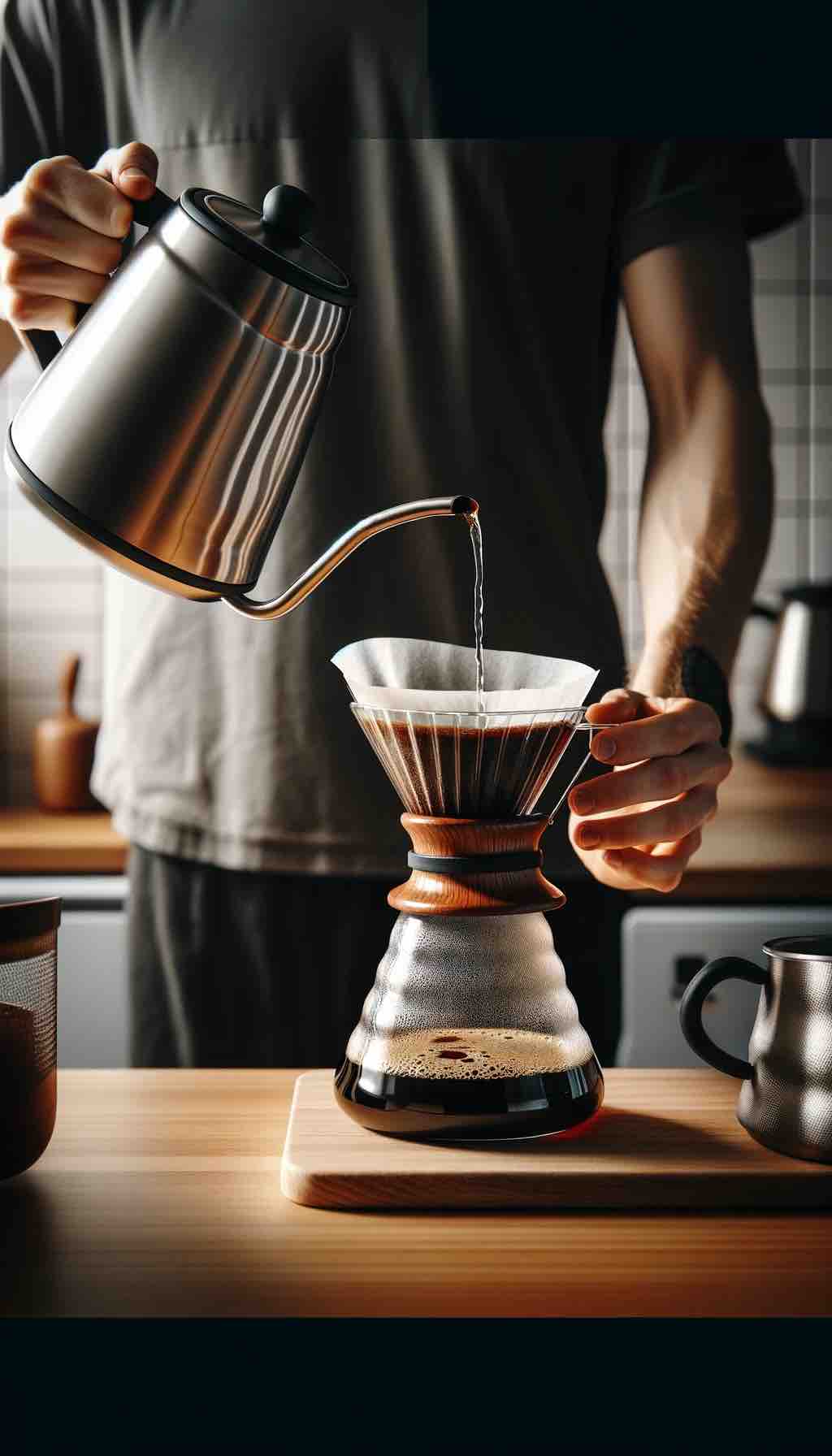
For coffee enthusiasts, the journey to a perfect cup of coffee is both a passion and a pursuit. The art of coffee brewing combines precision, patience, and a deep appreciation for the craft. Inspired by “Best ways to make great coffee at home | Everyday Food | ABC Australia,” presented by barista trainer Sam Demelis, this detailed guide delves into the nuances of four popular home brewing methods—French press, pour-over, moka pot, and ibrik. Each method offers a unique experience, transforming your home brewing into a ritual of flavor discovery.
The Quintessential French Press
A cornerstone of home coffee brewing, the French press is lauded for its simplicity and the rich, full-bodied coffee it produces. The process begins with a coarse grind, akin to cracked pepper, to ensure a clean extraction without sediment. The French press method is distinctive for its immersion brewing technique, allowing hot water and coffee to mingle freely, extracting the coffee’s oils and flavors comprehensively.
Key Steps for French Press Mastery:
- Pre-warm your press to maintain the coffee’s temperature throughout the brewing process.
- Use a coffee-to-water ratio of about 1:15, adjusting to taste.
- Brew for 4 minutes, then gently press the plunger, preventing agitation and bitterness.
- Serve immediately to capture the coffee’s peak flavor.
The Pour-Over Method: Precision and Clarity
Pour-over coffee, celebrated for its clarity and flavor precision, requires attention to detail. This method is perfect for those who enjoy the ritual of brewing and the clean taste it delivers. The pour-over technique utilizes a medium-coarse grind, encouraging even extraction and highlighting the coffee’s subtle notes.
Pour-Over Brewing Essentials:
- Wet the filter to remove any paper taste and ensure an even brew.
- Create a well in the center of your grounds to facilitate even water distribution.
- Pour water in a circular motion, starting from the center, to fully saturate the grounds.
- Control your pour rate with a gooseneck kettle for an even and thorough extraction.
Moka Pot: The Stovetop Espresso Maker
The moka pot, often referred to as a stovetop espresso maker, offers a potent brew reminiscent of traditional espresso. This method is favored for its rich flavor profile and accessibility. The grind for moka pot coffee should be medium-fine, filling the basket without packing it down, to allow for optimal water flow and extraction.
Moka Pot Brewing Guide:
- Fill the bottom chamber with water up to the safety valve.
- Place the coffee in the basket, creating a slight mound above the rim.
- Assemble and heat on medium flame, watching carefully as the coffee brews.
- Remove from heat once brewing is complete to prevent over-extraction.
The Ibrik: A Tradition of Turkish Coffee
The ibrik, also known as a cezve, is used to brew Turkish coffee, a method steeped in tradition and characterized by its strong, unfiltered brew. This technique requires a fine grind, almost powdery in consistency, and a slow, attentive brewing process.
Ibrik Coffee Brewing Technique:
- Measure water using the serving cup and pour into the ibrik, adding finely ground coffee without stirring.
- Heat gently, stirring slowly until the coffee dissolves and begins to froth.
- Watch closely, removing from heat just before it boils to preserve the delicate crema.
- Serve immediately, allowing the grounds to settle before enjoying.
Enhancing Your Coffee Experience at Home
- Invest in a Quality Grinder: A consistent grind is crucial. Consider investing in a burr grinder for uniformity and flavor preservation.
- Explore Different Coffees: Experiment with beans from various regions to discover diverse flavor profiles.
- Mind the Water: Use filtered water to ensure no impurities affect the taste of your coffee.
- Keep Your Equipment Clean: Regular cleaning is essential to maintain the purity of flavor.
By embracing these methods and refining your technique, you can transform your home into a sanctuary of coffee exploration. Sam Demelis’s guide not only offers a window into the nuanced world of coffee brewing but also invites you to deepen your connection to this ancient craft.
Watch and learn from Sam Demelis on ABC Australia for a visual and practical journey through the art of coffee brewing: Watch the video.
Whether you’re a seasoned aficionado or a curious newcomer, these methods provide a foundation for a lifetime of coffee exploration. Delve into the rituals, embrace the learning curve, and find joy in the pursuit of the perfect home-brewed cup of coffee.
FAQs for Mastering Home Coffee Brewing
- What’s the ideal grind size for each brewing method?
- French Press: Coarse, like sea salt.
- Pour-Over: Medium-coarse, akin to sand.
- Moka Pot: Medium-fine, similar to table salt.
- Ibrik: Very fine, almost like powdered sugar.
- How do I know the right water temperature for brewing?
- Aim for 195°F to 205°F (90°C to 96°C). For methods without temperature control, bring water to a boil and let it sit for 30 seconds before brewing.
- Can I reuse coffee grounds?
- Reusing coffee grounds is not recommended as most of the flavors are extracted during the first brew, resulting in a weak and flat second cup.
- How long should I steep coffee in a French Press?
- Steep for 4 minutes. Adjust slightly based on preference, but this is generally the sweet spot for a balanced brew.
- Why does my pour-over coffee taste bitter?
- Bitterness usually indicates over-extraction. Try a coarser grind, shorter brew time, or cooler water.
- How much coffee should I use for my brew?
- A general guideline is 1:15 coffee-to-water ratio by weight for most methods. Adjust to taste.
- What’s the best way to clean my coffee maker?
- Rinse with hot water after each use and descale monthly with a vinegar solution or a coffee machine descaler.
- How can I make my coffee less acidic?
- Opt for a brewing method with a shorter extraction time, like espresso or moka pot, and choose low-acidity beans.
- Why does my coffee have a weak flavor?
- Weak coffee can result from under-extraction. Consider a finer grind, longer brew time, or hotter water.
- Can I make espresso without an espresso machine?
- While true espresso requires pressure that most home equipment can’t achieve, methods like AeroPress or Moka Pot offer strong, concentrated coffee alternatives.
Blog Tags
coffee brewing, home barista, French press, pour-over, moka pot, ibrik, coffee grinding, water temperature, coffee ratios, coffee cleaning










